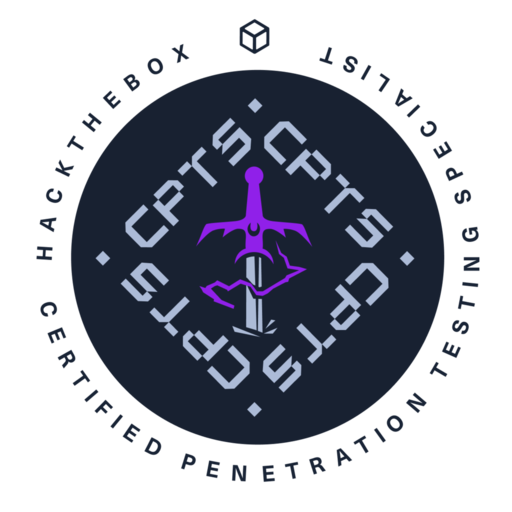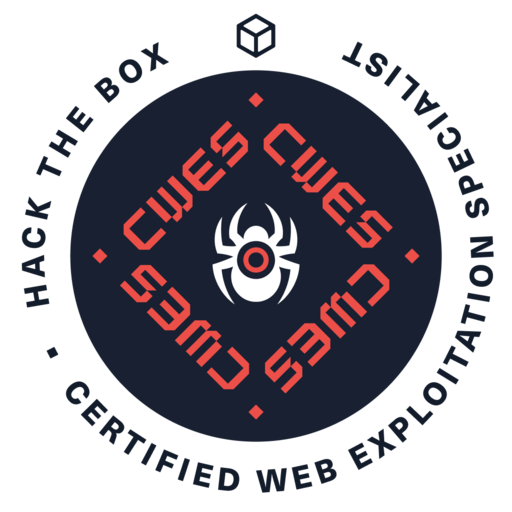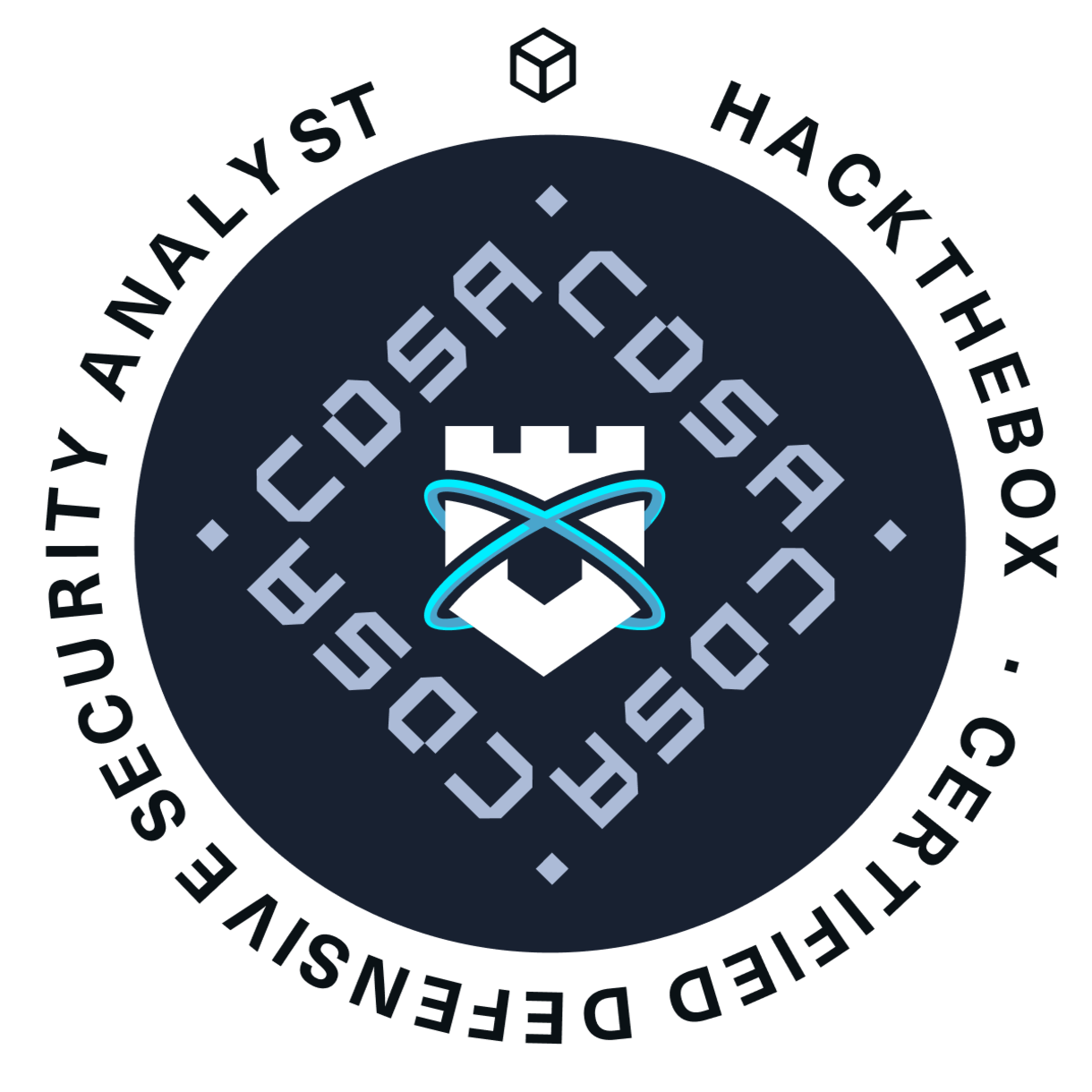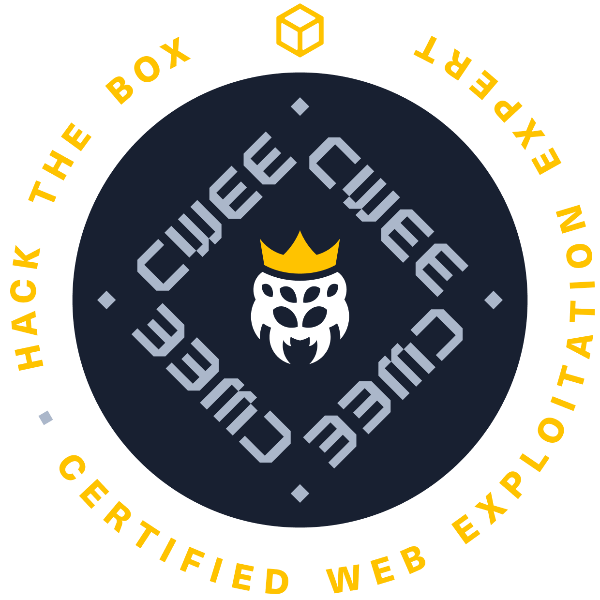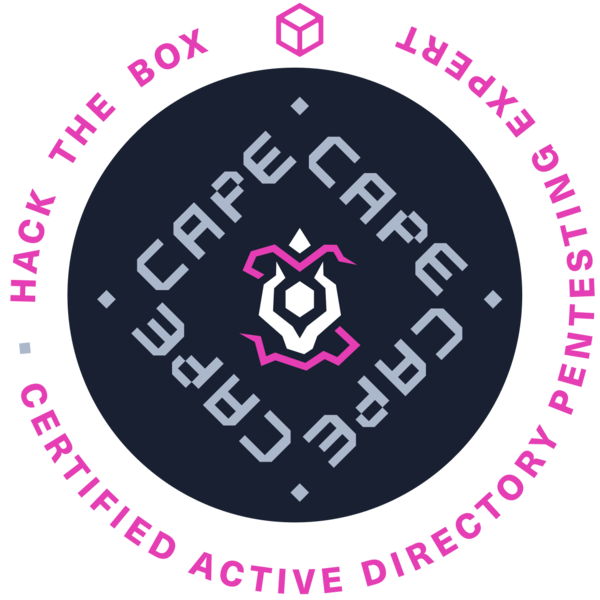CPTS Exam
CWES Exam
CDSA Exam
CWEE Exam
CAPE Exam
CPTS WRITEUP The Certified Penetration Testing Specialist (CPTS) exam is a hands-on, performance-based certification designed to evaluate a candidate’s practical skills in offensive cybersecurity. Developed by TCM Security, the exam focuses on real-world penetration testing scenarios that test a wide range of abilities—from information gathering and enumeration to exploitation, privilege escalation, and post-exploitation. It is intended for individuals who want to prove their capabilities in conducting penetration tests in environments that mimic enterprise networks.
CPTS REPORT CPTS EXAM
Unlike multiple-choice exams, the CPTS exam requires candidates to apply their knowledge in a lab environment. The exam takes place over 24 hours, during which the examinee must compromise multiple machines, escalate privileges, and collect various flags as proof of exploitation. After the practical portion, candidates have 48 hours to submit a professional penetration testing report detailing their attack paths, tools used, vulnerabilities exploited, and mitigation strategies. This dual format ensures that candidates are not only technically skilled but also capable of communicating their findings effectively, which is a vital skill in the cybersecurity industry.
CPTS REPORT CPTS EXAM
The CPTS exam is often compared to other well-known penetration testing certifications such as the Offensive Security Certified Professional (OSCP). However, many find the CPTS to be more beginner-friendly while still being technically challenging. It provides a structured approach to penetration testing without requiring bypasses of complex restrictions or unrealistic network defenses. It serves as an excellent stepping stone for those looking to build confidence and gain real-world experience before attempting more advanced certifications.
Candidates preparing for the CPTS should be familiar with a variety of tools and techniques, including Nmap, Burp Suite, Metasploit, PowerShell, and Linux command-line utilities. The exam covers core penetration testing concepts such as reconnaissance, scanning, enumeration, exploitation of known vulnerabilities, privilege escalation on both Windows and Linux systems, and post-exploitation activities. Knowledge of Active Directory environments, as well as web application vulnerabilities like SQL injection, file inclusion, and authentication bypasses, is also essential.
CPTS REPORT CPTS EXAM
To prepare, candidates can take the CPTS course offered by TCM Security, which includes hours of video lectures, walkthroughs, and access to practical labs. It is recommended that examinees take detailed notes, build a personal cheat sheet, and practice regularly in lab environments. The exam is open-book, meaning candidates are allowed to reference their own notes and the internet, making good documentation and organization critical to success.
The CPTS certification is well-respected in the cybersecurity community for its emphasis on real skills rather than rote memorization. It is particularly valued by employers seeking penetration testers who can demonstrate effectiveness in live environments. Holding this certification signals to potential employers that the individual is capable of identifying security weaknesses and clearly reporting their findings—a combination of traits that is in high demand.
CPTS WRITEUP
In summary, the CPTS exam is a practical, respected, and accessible way to validate one’s penetration testing skills. Whether you're aiming to break into the cybersecurity field or looking to solidify your existing knowledge, CPTS offers a meaningful and rewarding certification path.
The Certified Bug Bounty Hunter (CBBH) exam is a practical certification offered by TCM Security that focuses on real-world web application vulnerability discovery and exploitation, with an emphasis on bug bounty methodologies. It is designed for cybersecurity professionals, ethical hackers, and aspiring bug bounty hunters who want to validate their ability to find, exploit, and report security flaws commonly found in live websites and platforms. Unlike traditional exams that rely on theoretical questions, the CBBH is entirely hands-on and requires candidates to demonstrate their skills in a simulated environment.
CBBH WRITEUP CBBH EXAM CBBH REPORT
The CBBH exam environment consists of five web applications, each containing a range of vulnerabilities similar to those found on platforms like HackerOne, Bugcrowd, and Synack. These applications simulate real-world web technologies and configurations, and they include everything from common bugs to more complex and creative attack chains. Candidates are given 48 hours to exploit the vulnerabilities and collect flags as proof of their success. After completing the technical portion, they must submit a detailed, professional report within the next 48 hours, documenting all findings, exploit paths, and suggested mitigations.
Topics covered in the CBBH exam include a wide variety of web vulnerabilities such as Cross-Site Scripting (XSS), SQL Injection (SQLi), Cross-Site Request Forgery (CSRF), Server-Side Request Forgery (SSRF), Remote Code Execution (RCE), authentication bypass, IDOR (Insecure Direct Object References), subdomain takeovers, and logic flaws. Candidates must demonstrate an understanding of how these vulnerabilities work in different environments and how to safely and efficiently exploit them.
CBBH WRITEUP CBBH EXAM CBBH REPORT
A major component of success in the CBBH exam is report writing. Since bug bounty platforms require clear and concise documentation of vulnerabilities, the exam places strong emphasis on the candidate's ability to write structured, detailed, and professional reports. This includes providing steps to reproduce, evidence (screenshots or payloads), and clear remediation advice—key elements that align with what real-world programs expect from security researchers.
To prepare for the CBBH exam, TCM Security provides a comprehensive course that covers both foundational and advanced web security topics. The course includes hours of instructional videos, practical lab exercises, and walkthroughs of common bug bounty techniques and tools. Recommended tools for preparation and use during the exam include Burp Suite, browser developer tools, ffuf, Amass, SQLMap, and custom scripting in Python or JavaScript. The exam is open-book, meaning candidates are free to reference their notes or online materials during the test.
CBBH WRITEUP CBBH EXAM CBBH REPORT
The CBBH certification is well-regarded in the cybersecurity and bug bounty community. It demonstrates not only technical proficiency in web exploitation but also the real-world skills of proper documentation and vulnerability disclosure. For those looking to start or advance a career in ethical hacking or bug bounty hunting, the CBBH offers both credibility and practical experience.
In summary, the CBBH exam is a rigorous and realistic certification that mirrors the skills needed to succeed in bug bounty programs. It blends technical depth, real-world scenarios, and report writing to produce well-rounded, effective web security professionals.
The Certified Defensive Security Analyst (CDSA) is a practical certification offered by TCM Security that focuses on blue team skills—specifically, detecting, analyzing, and responding to real-world cyber threats. Designed for aspiring SOC (Security Operations Center) analysts, incident responders, and defensive security professionals, the CDSA exam challenges candidates to demonstrate their ability to work through simulated incidents using industry-standard tools and techniques. It’s ideal for individuals who want to prove their capability in monitoring, threat hunting, log analysis, and digital forensics.
CDSA Writeup CDSA Report CDSA Exam
Unlike multiple-choice exams that test theoretical knowledge, the CDSA exam is entirely hands-on. Candidates are given access to a virtual environment that simulates a corporate network that has experienced various security incidents. The exam consists of multiple tasks, such as identifying signs of compromise, tracing attack paths, analyzing malicious files or behavior, and providing detailed explanations of what occurred. The exam duration is 24 hours, after which the candidate must submit a professional, written report within another 24 hours, outlining their findings, methodology, indicators of compromise (IOCs), and recommendations.
The CDSA exam covers a wide range of defensive security topics, including log analysis, Windows Event Viewer, PowerShell command review, network traffic analysis using tools like Wireshark, file system forensics, malware behavior analysis, and use of SIEM (Security Information and Event Management) platforms. Candidates are expected to have a working knowledge of Windows and Linux environments, familiarity with threat actor behavior, and an understanding of how attacks progress through the cyber kill chain.
A key part of the CDSA exam is evidence-based analysis. Rather than guessing, candidates must base their conclusions on solid artifacts such as log entries, network captures, system artifacts, or file hashes. This reflects real-world defensive work, where analysts must justify every assertion with clear proof—especially when responding to incidents or writing post-incident reports for leadership or compliance teams.
CDSA Writeup CDSA Report CDSA Exam
Preparation for the CDSA exam is best done through the official CDSA course offered by TCM Security. This course includes instructional videos, case study walkthroughs, and labs designed to simulate the types of incidents candidates will face during the exam. Key tools covered include Sysinternals Suite, Wireshark, Event Viewer, PowerShell, Sysmon, and open-source forensic tools. Candidates are also encouraged to practice with freely available log datasets, CTI (Cyber Threat Intelligence) platforms, and endpoint detection tools.
CDSA Writeup CDSA Report CDSA Exam
The CDSA certification is well-regarded for proving a candidate’s ability to detect and respond to threats in a practical, job-relevant way. It’s especially valuable for individuals seeking roles in SOCs, as it mimics the workflows and tools used by real analysts. Unlike other certifications that focus solely on alert handling or generic theory, CDSA emphasizes investigation, root cause analysis, and comprehensive incident reporting.
In summary, the CDSA is a strong, practical certification for anyone pursuing a career in defensive cybersecurity. It validates a candidate’s skill in handling real incidents, understanding attacker behavior, and delivering actionable reports—making it a worthwhile credential for blue teamers and incident response professionals alike.
The Certified Web Exploitation Expert (CWEE) exam is a challenging, hands-on certification designed to assess a candidate's ability to identify, exploit, and report vulnerabilities in modern web applications. Offered by TCM Security, the CWEE focuses on practical skills and real-world scenarios, making it ideal for penetration testers, bug bounty hunters, and cybersecurity professionals who specialize in web application security. The exam is not based on multiple-choice questions but instead requires candidates to demonstrate their skills in a simulated lab environment.
CWEE Writeup CWEE Report CWEE Exam
The CWEE exam provides candidates with five web applications, each with multiple vulnerabilities of varying complexity. The objective is to exploit these vulnerabilities, collect flags as proof, and document the findings in a professional penetration test report. The exam duration is 48 hours for the practical portion, during which candidates must identify and exploit the issues. Following the practical test, there is a 48-hour window to submit the report, which is evaluated based on the accuracy, clarity, and completeness of the findings.
CWEE Writeup CWEE Report CWEE Exam
The vulnerabilities covered in the CWEE exam include a wide range of web application issues, such as SQL injection, Cross-Site Scripting (XSS), Server-Side Request Forgery (SSRF), Remote Code Execution (RCE), authentication bypasses, file upload vulnerabilities, insecure deserialization, and more. Candidates are expected to understand and exploit both traditional web vulnerabilities and those found in modern frameworks and technologies. A solid understanding of HTTP protocols, browser behavior, session management, and input validation is essential.
One of the distinguishing features of the CWEE exam is its emphasis on creative problem-solving. Some of the challenges may require chaining multiple vulnerabilities together to achieve full exploitation. This tests not only technical knowledge but also a candidate's analytical thinking and ability to approach complex problems from different angles. The exam is open-book, so candidates are allowed to use notes and online resources, but time management and strong documentation habits are key to completing the exam successfully.
To prepare for the CWEE, TCM Security offers a comprehensive course that includes detailed video lessons, practical labs, and walkthroughs. The course guides learners through various attack techniques, tool usage, and real-world examples, helping them build a strong foundation in web exploitation. Recommended tools include Burp Suite, browser developer tools, SQLMap, and custom scripts written in Python or JavaScript.
The CWEE certification is recognized as a valuable credential in the cybersecurity field, especially for those focused on offensive web security. It demonstrates that a candidate possesses both technical expertise and the ability to communicate findings professionally—qualities that employers look for in penetration testers, web application security consultants, and bug bounty researchers.
CWEE Writeup CWEE Report CWEE Exam
In conclusion, the CWEE exam is a rigorous and rewarding certification that proves a candidate’s capability in modern web exploitation. With its emphasis on hands-on testing and real-world challenges, it provides a realistic measure of skill and is a solid asset for anyone pursuing a career in offensive security or specializing in web application assessments.

